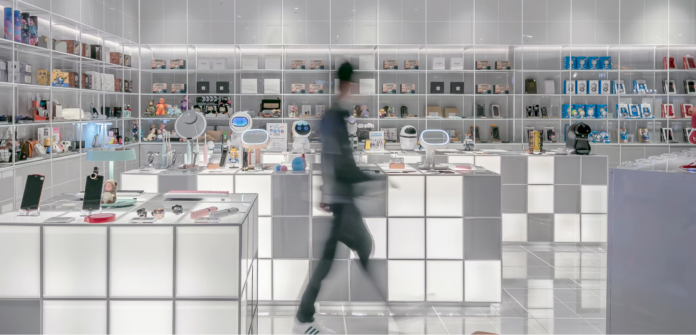One of the most exciting ways digital signage can be used is by triggering content based on specific input. This can stem from direct interaction from the customer, motion sensors placed in key locations, or even parameters from other sources, such as weather information or other data available online. There are tons of ways to use triggered content with digital signage, and we’ll explore just a few common ones.
Content triggering heavily depends on the context of a specific business. For example, during the 2020 pandemic, motion sensors were tied to automatic doors to prevent them from letting people in if a certain occupancy limit was reached. Digital displays would then inform newly arrived visitors to be patient and instruct them when they may enter. Below, we’ll cover a few additional uses to give you inspiration on using triggered digital signage content in your own business.
Sign-up reminders
For any business which runs on a membership model, whenever non-members check in, or if someone finalizes a purchase without a membership discount, a display can inform the shopper that they’re missing out. In case of interactive displays, this can then guide users to sign up online.
Consider which other activities can be tracked via technology. Display reminders for expiring memberships, or special advantages or discounts that are easily applied yet the customer may have missed.
Customized welcome messages
With motion sensors, a display can instantly deploy a welcome message to customers. If there is any information which changes daily, it can be tied to this message. For example, the display can tell shoppers what item is on discount today.
Proximity messaging
In case a customer spends a significant amount of time near a sensor, trigger appropriate content for them. Maybe they’re unsure, or are looking for something specific. Have the display instruct them to go online to look up item availability, or just to ask a store clerk for help.
Interaction on demand
Run displays with advertisements and standard messaging, but then trigger an interactive layout once a user interacts with the display. A good tip here would be to include a small banner on the bottom that says “Click on the display to access interactive maps,” or whichever use fits the desired context.
Weather-based changes
Set content to change based on outdoor conditions. If a certain temperature threshold is crossed, update the ambient decorations on your internal menus or create custom pop-up messages when appropriate. Tying discounts to these conditions can be another idea, for example discounts on cold drinks on hot days.
Direct input
Content is most simply triggered when a user pushes the button on a touch screen. Another way is to supply them with a QR-code they may scan which will act as a button press. Combined with opening a link on their device, this can lead to some sleek results. For instance, a user may scan a QR-code to follow your business on social media, which then triggers a very short pop-up on the screen that says “Thanks for the follow!”
Target promotions
Trigger specific ads based on timing and input data. For example, you may want to trigger ads more frequently when there is a spike in traffic. Consider what the data is telling you and how you can use it for better-placed advertising. For example, a gym display may trigger protein shake ads as it notices multiple people finishing their training session. This data can be based on their check-in times and taking into account the average length of a training session.
As it generally is with advertisements, figuring out when and where to place them for maximum impact requires knowing your target audience well.
Product information
As a customer picks up a smartphone from its place, a display can show additional information about it. From hardware specifications to available color variations, you can pack a lot into a digital display. For a larger number of products another option is scanning product barcodes and then having the display provide that information.
Another example is triggering ingredient information in a bakery. When a buyer approaches the bread or pastry section, a display can share custom messages such as “Made with local ingredients” or “Buy 6 cupcakes, get 1 free!”
Schedule content
It doesn’t fall under the category of triggered content as the examples above, but content scheduling is important to mention here. One could make the point, by definition, it is indeed triggered content as it’s triggered by time.
Still, if you’re able to predict key opportunities for displaying content throughout the day, don’t bother with setting up triggers and instead simply schedule it. Fast food businesses are a great example as they rotate their menus throughout the day. Another example are hotels, as they have specific check-in and check-out times, acting as opportunities for featuring upgrades, services, local information etc.
Whether you’re setting up triggered content or scheduling it days or even months in advance, digital signage software will help you keep everything in check. Try out OnSign TV for free to experiment and explore all its options!
Cover Image by Xianjuan HU.







